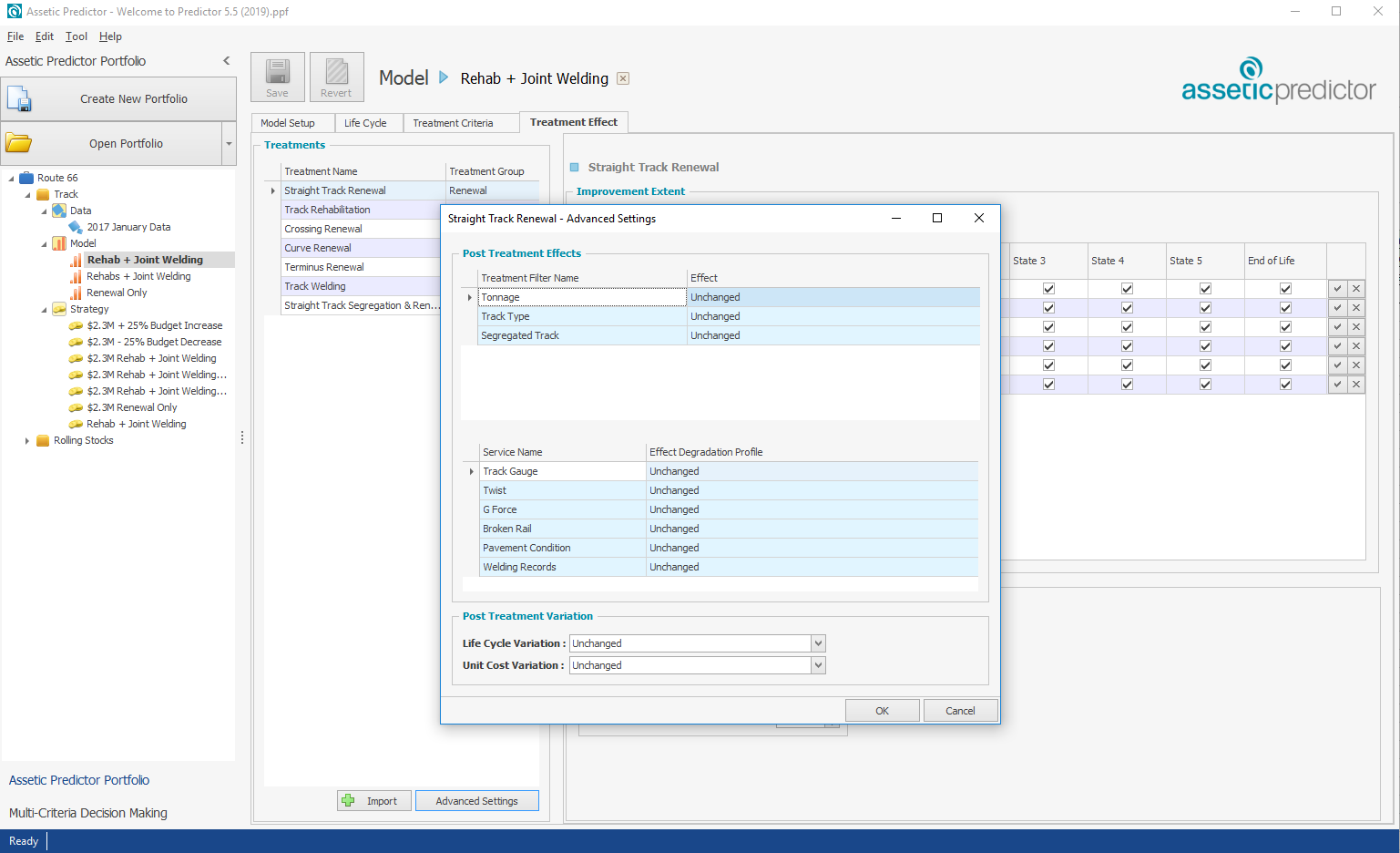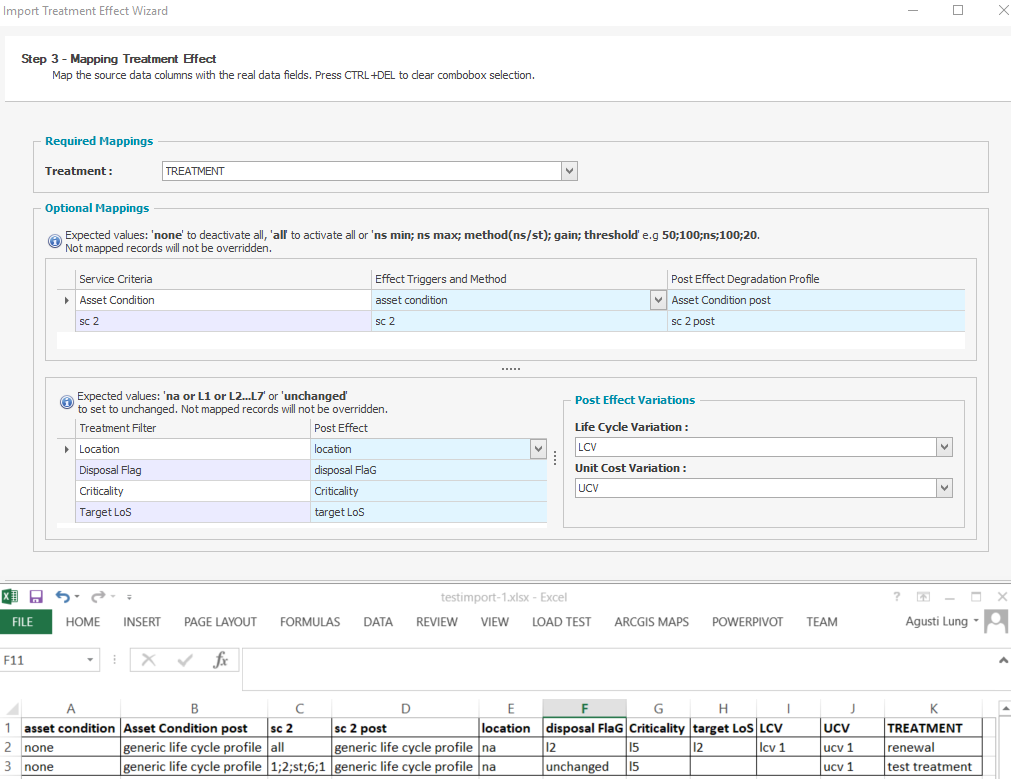Treatment Effect on Treatment Filters
Once a treatment is carried out on an asset, not only will it improve the status of an asset's service criteria, it can also be configured to change other attributes of that asset, such as material type, criticality of the asset etc.
The 'Advanced Settings' button in the Treatment Effect tab allows users to configure these post-treatment effects. For example, if a tiled roof is replaced with a corrugated iron roof as part of a roof renewal, then the post-treatment effects would be configured such that after the treatment is applied the asset will now adopt a new life cycle degradation profile according to its new material; in this case, corrugated iron.
It will also change the available treatments to include treatments that target roofs with corrugated iron rather than tiles.
- Click on Advanced Settings in Treatment Effect
- Using the dropdown menu, select the post-treatment effect of the selected treatment filter
- Assign new life cycle variation and unit cost variation if applicable

The Advanced Settings can also be configured in bulk as part of a Treatment Effect import, as with the Treatment Effect on Service Criteria.
To do this, an Excel file should be prepared (a template for this can be downloaded here), and then the 'Import' button selected to load the Import Treatment Effect Wizard:

The import file should have a Treatment column heading, below which the Treatment is specified by name. Then, for each Service Criteria, there is a column heading for that Service Criteria's Effect and Post-Effect Degradation Profile. These columns will automap based on the Service Criteria name, and Service Criteria name with a ' post' suffix, respectively. Likewise, there is a column for each Treatment Filter, to specify the post-treatment effect on that filter, a LCV (Life Cycle Variation) column, and a UCV (Unit Cost Variation) column.
For each Treatment Filter, the post effect can be 'unchanged', 'na', or one of the labels ('L1' through to 'L7'). Likewise, the Life Cycle and Unit Cost Variations can either be 'unchanged' or populated with the name of the new variation.
An example of a mapped import and the excel file used is shown below:

